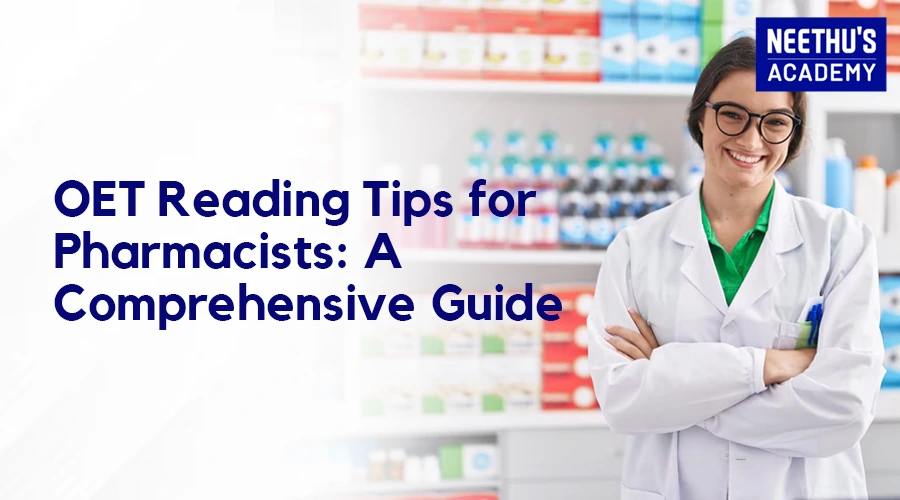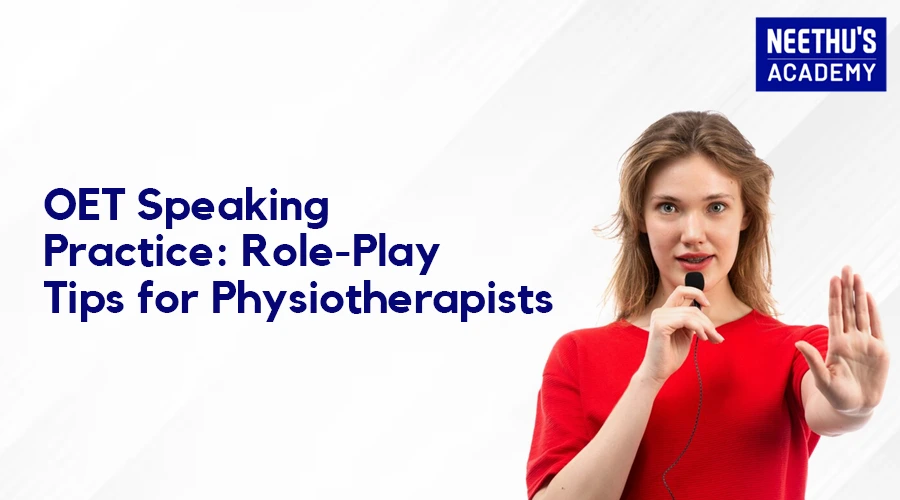Pharmacy OET Guide: Essential Reading Skills for Exam Success
For pharmacists, the OET exam is a highly significant exam that healthcare professionals must pass in order to be able to practice their profession in English-speaking countries. For pharmacists, it is very important to be good at the reading subtest because it measures the reader’s ability to read and comprehend texts frequently used at the workplace. Such texts contain specialized medical and pharmaceutical information for the pharmacist. This guide provides a detailed overview of OET reading tips for pharmacists, specifically how to improve reading comprehension and speed and efficiency to ace this crucial part of the exam.
What is the OET reading subtest for pharmacists?
The reading subtest of OET tests your ability to understand the meaning of written texts and draw information from them; also, it tests your skills to apply knowledge in actual practice. This subtest is of particular importance for a pharmacist as it assesses your ability to read and understand pharmaceutical texts such as drug information, patient leaflets, healthcare guidelines, and workplace communications.
Exam Format: The exam will involve diverse text types, which are gapped texts, documents about workplace communication, and larger passages with more substantial contents.
There are three sub-parts of the OET Reading Test:
Part A: Accelerated Reading (Gapped Text) This entails your ability to quickly read short texts and fill gaps with missing information.
Part B: Workplace Communication: A section that determines your ability to comprehend written communication which might be applied in a pharmacy or health care setting, such as memos, letters, and reports.
Part C: Long Texts In the following two long healthcare-related passages, you have to show your ability in the understanding of complex texts and the answering of long text-based questions.
Why Are Reading Skills Critical for Pharmacists
Pharmacies need to understand and read many documents with information critical to the health of the patients, drugs, and healthcare procedures. Reading efficiency and comprehension are, therefore, very important to the pharmacist for the safe provision of care and the provision of proper advice to both the patient and the colleagues in healthcare. without a strong reading skill, pharmacists would very likely miss essential information relevant to the records of the patients, drugs, and healthcare procedures that would hinder their care and safety adversely.
In fact, reading is the very sub-test of OET, with which it tests your competence to work in an environment of healthcare with an oral accent in an English-speaking system to understand all reading materials effectively. So, mastery of the OET Reading test will help you pass the exam, but most importantly, improve your professional capabilities as a pharmacist.
Understanding the OET Reading Format
Structure of the OET Reading Test
The OET Reading subtest is divided into three parts, each with a specific focus. Understanding the structure of each part is important in having a focused strategy for tackling the exam.
Part A Expedited Reading: This portion comprises several short passages where specific gaps are given, and one needs to fill out as much as possible while reading fast, pulling important points, and sometimes crucial missing information. Here is a part that helps find information very quickly using quick reads.
Part B: Workplace Communication: This part has various documents related to workplace communications, including emails, memos, reports, and formal communication. Extract the relevant information and apply it to your work as a pharmacist.
Part C: Long texts: These are longer articles on health issues, which demand careful reading. This section, therefore, tests the skills of the reader in finding meaning in medical and pharmaceutical messages. A series of questions based on the passage require the testee to show off their comprehension of the details conveyed and underlying meanings.
Essential Reading Skills to Achieve Success in the OET
To do well in the reading subtest of the OET, certain reading skills must be acquired. This will enable you to read passages efficiently, answer questions with accuracy, and manage time effectively.
Important Reading Skills for Pharmacists
Skimming: Skimming is the technique that would allow you to read a text passage at a glance just to grasp the general notion. That is very effective for Part A, for which you should fill in holes quickly. You can identify such things as the structure of the text and key themes on skims with general information from reading virtually every word.
Scanning: Scanning is another skill, where you focus on finding specific information. For instance, when responding to questions in Part B or Part C, you will scan the passage in a manner that focuses on finding just what the question is asking.
Deep Comprehension: Although scanning and skimming are useful for efficiency, you need to build the ability to read for deep understanding. You will be asked in Part C, and other parts as well, to comprehend challenging texts. Therefore, it is important to practice reading for both explicit details (for example, drug dosages) and implicit meanings (for example, a sense of tone or intent of the text).
Critical Thinking: Critical thinking is essential in understanding healthcare-related texts. In many cases, you’ll need to infer meaning from the text, understand the purpose behind a communication (e.g., a medical report), and assess whether the information is reliable or accurate
OET Reading Tips for Pharmacists
Now, let’s go through a few actionable tips that could aid you in passing.
Tips for Part A: Rapid Reading
Practice under Timed Conditions: The gap filling part of the test is read and then gaps need to be filled within a given time. So one needs to increase both speed and accuracy by practicing under timed conditions.
Identify Key Information: Pay attention to the context of the gaps. Look for key words that will help you fill in the missing information.
Develop a Routine: Begin with short practice texts and gradually move on to longer ones. This will make you get used to the time pressure and enhance your ability to process information.
Tips for Part B: Workplace Communication
Read the Questions First: Before reading the passage, quickly scan the questions to know exactly what information you need to look for.
Highlight Key Details: As you read, underline or highlight important details that can help you answer the questions.
Understand Document Types: Practice with various types of workplace documents—memos, reports, emails, etc.—to become familiar with different formats and structures.
Tips for Part C: Long Texts
Read Strategically: Do not read every word. Try to grasp key points, especially in the introduction and conclusion of the text.
Take Notes: In reading larger texts, jot down things or keywords that come to your mind as likely to help you while answering the questions.
Do not get stuck: If you don’t know a word, do not waste your time trying to figure it out. Just keep moving and find the meaning.
Best Online Coaching Center for OET Kerala
Neethu’s Academy offers quality OET preparation with special reading training for pharmacists. It offers the students expert faculty and practice material that covers all aspects of the OET, whether it is reading or speaking.
Choosing the Right OET Coaching Centre
When choosing the OET coaching center, there should be proven results as well as sufficient study material. Look out for those centers that possess experienced instructors offering personalized attention coupled with regular mock examinations to check up on your developments.
Conclusion
The OET Reading subtest for pharmacists requires a blend of speed, comprehension, and specific knowledge of medical and pharmaceutical texts. You can develop your essential reading skills, practice regularly, and use targeted strategies for each part of the test to enhance your reading abilities and increase your chances of success. By doing appropriate preparation, coaching, and frequent practice, you will surely ace the OET Reading subtest and take yourself a step closer to being closer to achieving your goal: to practice pharmacy in a native English-speaking country.
Frequently Asked Questions





